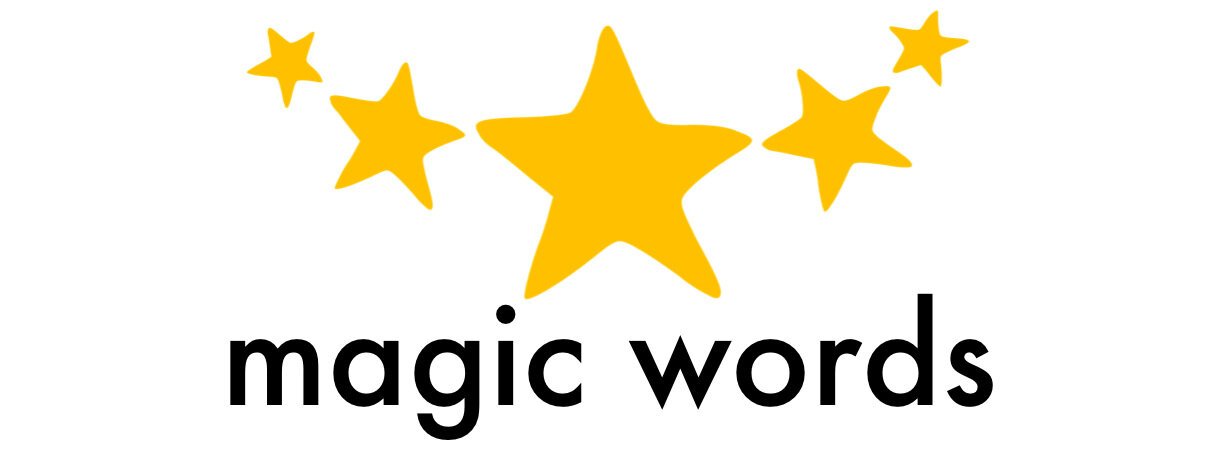By Faye Nugent - Magic Words Level 1 Speech & Language Therapist
Your NQP year is a big learning curve, both clinically and emotionally. I have come to the end of my NQP year and it’s been a journey! I have a varied caseload across mainstream schools, general clinic and complex needs clients which I am thoroughly enjoying.
Here are some of the things that have helped me in my NQP year.
You’re not expected to know everything
I remember finishing university feeling the following: I can assess a child very well but what next? What therapy do I do? I had some experience from placement about different types of therapy but there is only so much you can fit in at university.
When I started my NQP role here at Magic Words Therapy I thought I was supposed to know all the assessments, therapy approaches and resources I should be using with all my clients. Speech and language therapy covers such a wide range of client groups; from dysfluency to ASD to speech sound difficulties and developmental language disorder – the list goes on! It would be impossible to be an expert in everything.
I have learnt lots different therapy techniques and strategies either from CPD training days, speaking to my colleagues and supervisor and reading up on the different therapy approaches out there. Working alongside more experienced therapists has also really helped me take the pressure off myself and to realise that speech and language therapists are always learning in their careers and that no therapist knows everything; there is always something to learn!
My confidence has definitely grown through experience.I might not always know the answers, but I am learning the places to look for them and the people to speak to.I am always open with parents and teachers; if I don’t know the answer I will tell them so and I will research it and get back to them about it.It is okay to not know everything.I’m always looking out for ideas and inspiration to make therapy more fun and interactive for the children too – Pinterest, Twinkl and the shop ‘Flying Tiger’ have been life savers for me!
No one knows you’re a Newly Qualified Therapist
Nope, no one knows unless you tell them. That goes for teachers, parents, SENCOs and other speech and language therapists. A parent won’t know that it is your first ever initial assessment, and the school SENCO won’t know it is your first MDT meeting, unless you tell them.
In my first few weeks as an NQP, I thought everyone would know this was my first job and that I was inexperienced. It did feel strange not having a clinical placement tutor with me all the time and having to make clinical decisions on my own. With time I have become more confident in my clinical knowledge and decision making and now feel like a ‘proper’ speech and language therapist, not a student anymore!
Everyone has to start somewhere: trust the process.In fact, other speech and language therapists find having NQPs in the team helpful; it’s good having someone on the team with fresh eyes, and recently trained up in the profession.Be confident in what you know, and the skill set you have. Remember you are qualified!
‘A problem shared is a problem halved!’
Being a speech and language therapist is a very busy role and it can become very overwhelming, particularly in your first year. I have found it so helpful to speak to colleagues and my supervisor. They’ve helped with advice regarding assessment, therapy and caseload management as well as listening to how I am feeling, both the positives and the challenges.
Clinical supervision is an essential part of your professional practice, it gives you the chance to discuss your work with someone who is experienced and qualified. Regular supervision meetings have helped me to develop my clinical knowledge and skill set. My supervisor has guided me to the appropriate next steps to take with challenging cases or situations. The meetings also provide the opportunity to reflect on how you are coping and feeling. I have found that discussing any problems, big or small, has always been helpful. Sometimes it is just good to get something off your chest!
Supervision sessions are also a chance go through and more importantly sign off your NQP competencies. It is a big document, but I found it helpful at the beginning of my NQP year to read through each competency and think about how I was going to achieve it and the evidence required. It meant I had an idea and plan of what I needed to do.
It has also been useful to speak to my NQP colleagues.Most of our questions and queries have been similar so it has been good to support each other on the journey!
‘Have a go!’
I am a kinesthetic learner so after doing some reading I always learn best by just having a go. I particularly remember feeling very nervous about running my first dysfluency group session; What do I do? What is this ‘Tortoise Talking’? Will the children know this is my first dysfluency group?
After I did my first session I felt so much more confident; the children responded well, they had no idea it was my first session.I was able to reflect on what went well and what I could improve ready for the following week.
Be flexible
Things change all the time: fire drills halfway through therapy sessions; ‘Viking day’ at school and the whole school is off timetable, parents not turning up for meetings. Initially, I found it difficult when plans changed, especially when I was nervous about the session or had taken a long time to plan and prepare resources. Now, I try to plan ahead and I ask parents their preferred method of communication (face-to-face meetings, emails, phone calls) and find out about events going on at school (sports day, whole school assemblies) etc.
However, you can’t plan for everything and sometimes you just have to roll with it.For example, doing observations of the client instead of a therapy session on ‘Viking Day’ or using the therapy time to complete client-related work.
Breathe!
It's important to take time and ensure you are getting a good work-life balance. We are very busy day-to-day in our roles as speech and language therapists and it can be easy for this to spill over into our spare time: thinking “I’ll just finish the notes at home” or finishing a report in the evening. I try to keep work in the work environment and once I get home to take the time to relax and do things I enjoy. I feel I am able to do a better job because I have kept a clear distinction between work and home and not running myself into the ground.
My confidence and clinical expertise have grown with time and experience.I like that in our profession we are always learning and developing.Coming towards the end of my NQP year it has been great to look back and reflect on how far I have come.





















































